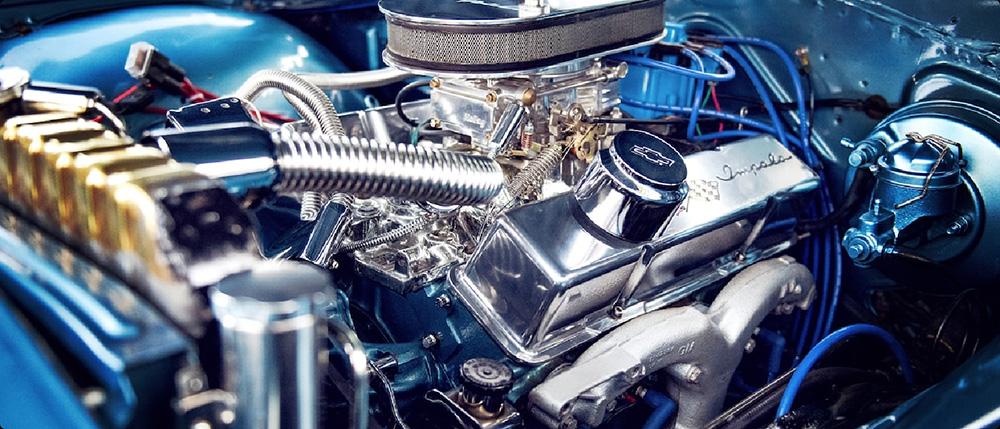In the intricate dance of machinery that underpins modern life, few components are as pivotal—and as fascinating—as the gearbox and motor assembly. These seemingly simple yet profoundly complex systems act as the beating heart and nervous system of countless devices, from automotive engines to industrial robots, from aerospace systems to household appliances.

Imagine the marvel of turning a tiny electrical impulse into a powerful, controlled motion capable of lifting heavy loads or enabling precise positioning. At the core of this transformation are the gearboxes and motors—each playing a vital role in ensuring that energy flows smoothly, efficiently, and accurately. Understanding their synergy not only unlocks insights into how modern machines function but also reveals the ongoing innovation that pushes the boundaries of engineering.
The Motor: The Power Source
The motor, often the star of the show, is essentially the engine that converts electrical energy into mechanical motion. It’s an elegant piece of engineering, ranging from simple brushed DC motors to sophisticated brushless or synchronous motors used in high-end applications. The choice of motor design depends on multiple factors such as power requirements, speed, precision, and operational environment.
Electric motors have revolutionized industry in the last century, offering cleaner, more efficient, and more controllable power. The advancements in motor technology—like permanent magnet motors and inverter-driven variable speed motors—have made systems more adaptable. They can operate at different speeds and torque levels, providing versatility that was once unthinkable.
The core principle involves electromagnetic fields. When electric current passes through coils within the motor, it generates a magnetic field that interacts with permanent magnets or electromagnets, producing a force—an idea rooted in fundamental physics. This force results in rotational motion, which is the first step in many mechanical processes.
However, motors alone are rarely enough to meet the demands of heavy-duty or precise operations. This is where gearboxes come into play, converting the raw power into usable, refined motion. And this synergy—motor plus gearbox—is what makes the marvel of modern machinery possible.
The Gearbox: The Precision Translator
A gearbox acts as a translator, adapting the motor's high-speed, low-torque rotation into low-speed, high-torque motion suitable for various applications. It’s a marvel of mechanical design, composed of gears, shafts, bearings, and housings, meticulously arranged to withhold immense forces while maintaining smooth operation.
Gears come in a dazzling array of types—spur, helical, bevel, worm, planetary—and each serves specific functions depending on the application's needs. Spur gears are straightforward and ideal for transmitting power between parallel shafts. Helical gears offer smoother and quieter operation, suitable for high-speed contexts. Bevel gears change the axis of rotation, vital in applications like automobile differentials. Worm gears allow for high reduction ratios in compact spaces, but often with some efficiency trade-offs.
The primary purpose of a gearbox is to modify the characteristics of the motor’s output—either increasing torque while reducing the speed or vice versa. This ensures the machinery can perform its tasks effectively without overloading the motor. For instance, in a conveyor belt, the motor might spin at thousands of RPM, but the gearbox reduces this to a manageable pace, amplifying torque to handle heavy loads.
In industrial applications, gearboxes must be designed with durability in mind, capable of withstanding the forces involved in continuous operation. Lubrication, material choice, and precision manufacturing are critical—an imbalance could lead to early wear, failure, or inefficient performance.
The Marriage of Components: Efficiency and Control
When coupled, motors and gearboxes form an efficient unit that can be fine-tuned for specific tasks. Control systems can adjust motor speed and torque dynamically, while the gearbox ensures that the output aligns with operational demands.
This integration enables adaptive motion control, vital in robotics, CNC machinery, and even consumer electronics like camera stabilizers. The advent of smart gearboxes with sensors and feedback loops further enhances how machines operate—allowing for real-time adjustments, predictive maintenance, and energy optimization.
In electric vehicles, for example, the seamless blend of motor and gearbox—sometimes a single integrated unit—delivers smooth acceleration, regenerative braking, and efficient power usage. This exemplifies how design innovations are evolving the traditional concepts into more sophisticated, integrated solutions.
Challenges and Innovations
Despite their robust utility, gearbox and motor assemblies are not without challenges. Efficiency losses, heat generation, noise, and mechanical wear can compromise performance. Engineers continually seek improvements to mitigate these issues, exploring advanced materials, lubrication techniques, and innovative gear geometries.
For instance, the development of hybrid gear systems combining spur and helical gears aims to balance durability and quiet operation. Similarly, the integration of magnetic gearboxes presents an entirely contactless transmission, reducing wear and maintenance.
Technology trends such as additive manufacturing enable rapid prototyping of complex gear geometries, opening new avenues for customization and performance enhancement. Likewise, the integration of sensors and IoT technology in gearboxes provides real-time health monitoring, ensuring machines operate at peak efficiency and longevity.
In the End…
The synergy between the gearbox and motor assembly is a testament to human ingenuity. It's a dance of physics, materials science, and innovative engineering that transforms our raw energy sources into the precise, controlled motion that powers our world.
As industries move toward automation, electrification, and smarter systems, the importance of these components only grows. Their ongoing evolution promises quieter, more efficient, and longer-lasting systems—driving progress across countless sectors.
Stay tuned, because as technology advances, the future of gearbox and motor assemblies looks nothing short of electric—pun intended—with new materials, smarter controls, and even more integrated designs shaping the way we live, work, and explore.
Kpower has delivered professional drive system solutions to over 500 enterprise clients globally with products covering various fields such as Smart Home Systems, Automatic Electronics, Robotics, Precision Agriculture, Drones, and Industrial Automation.




































